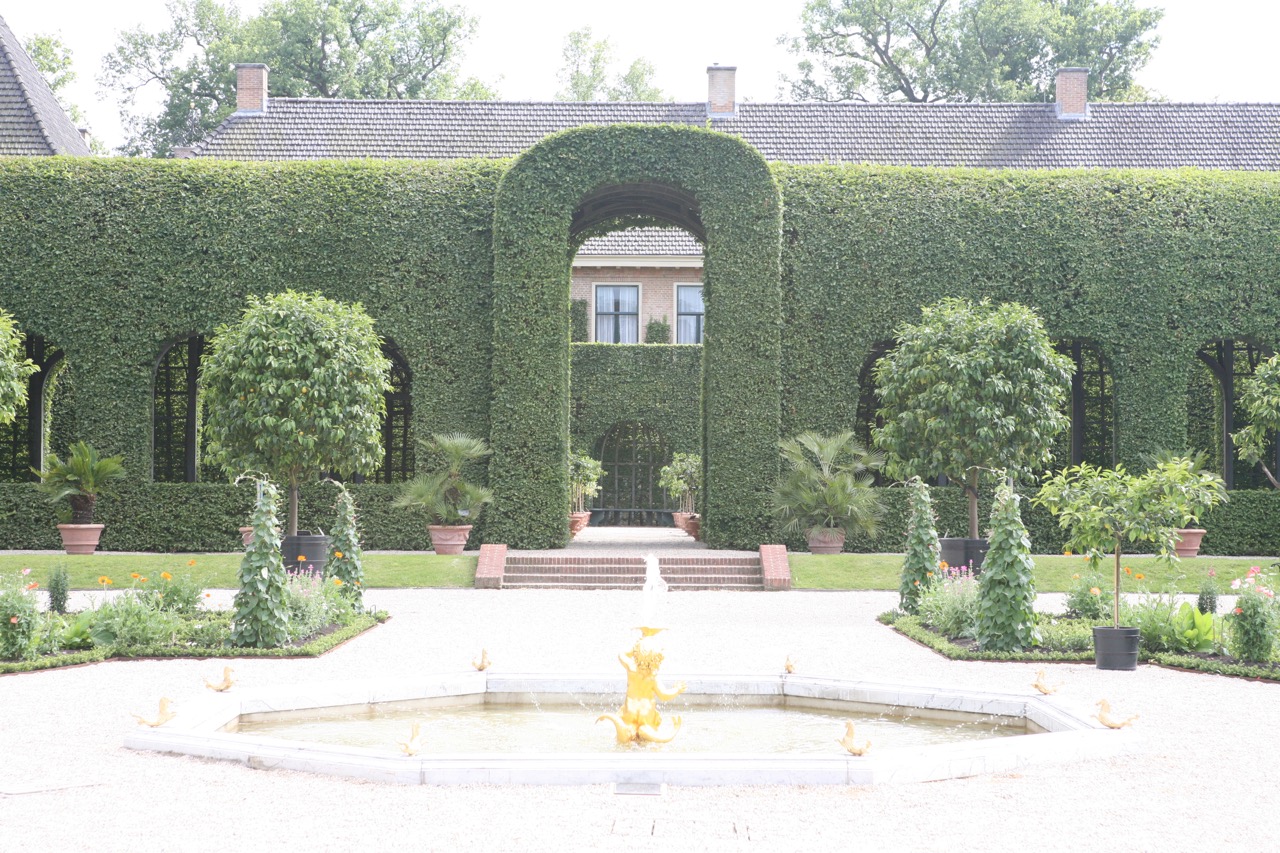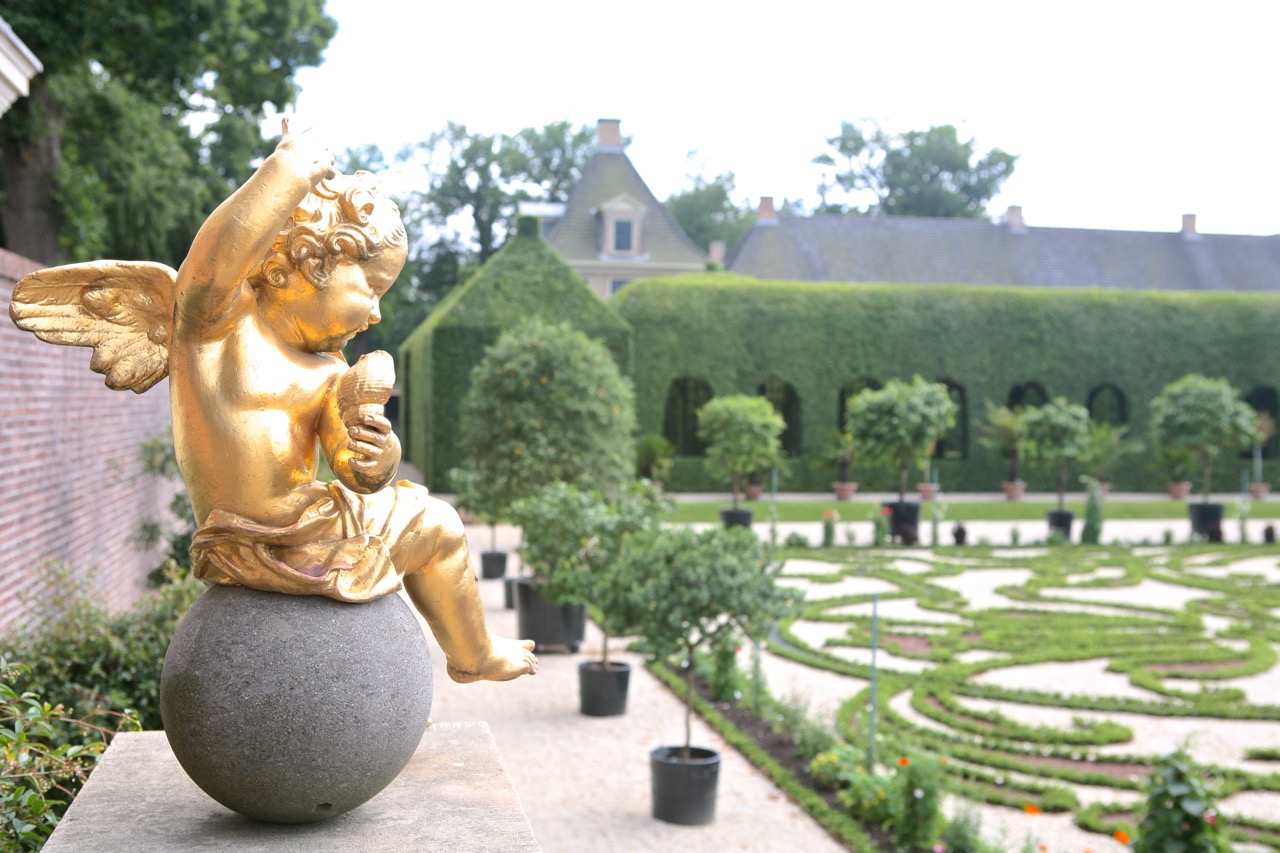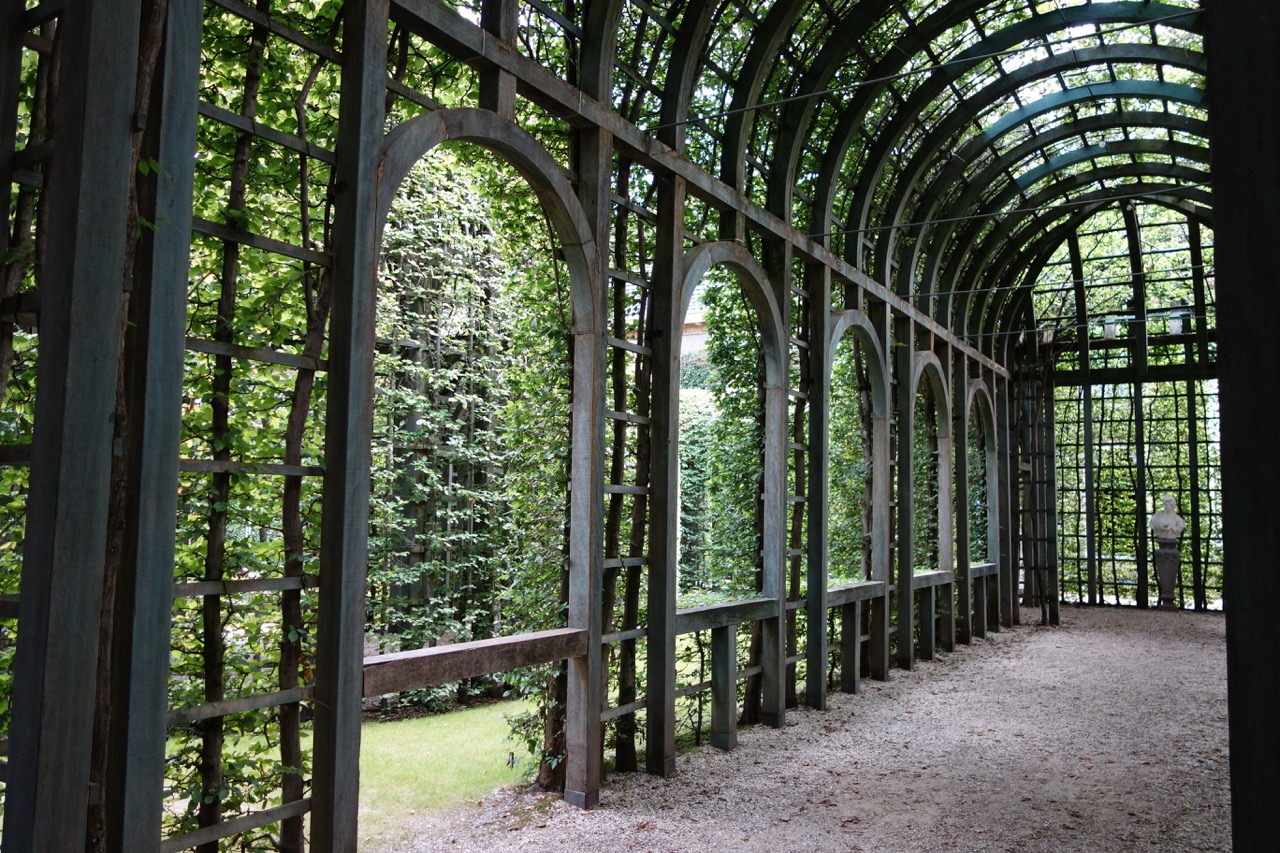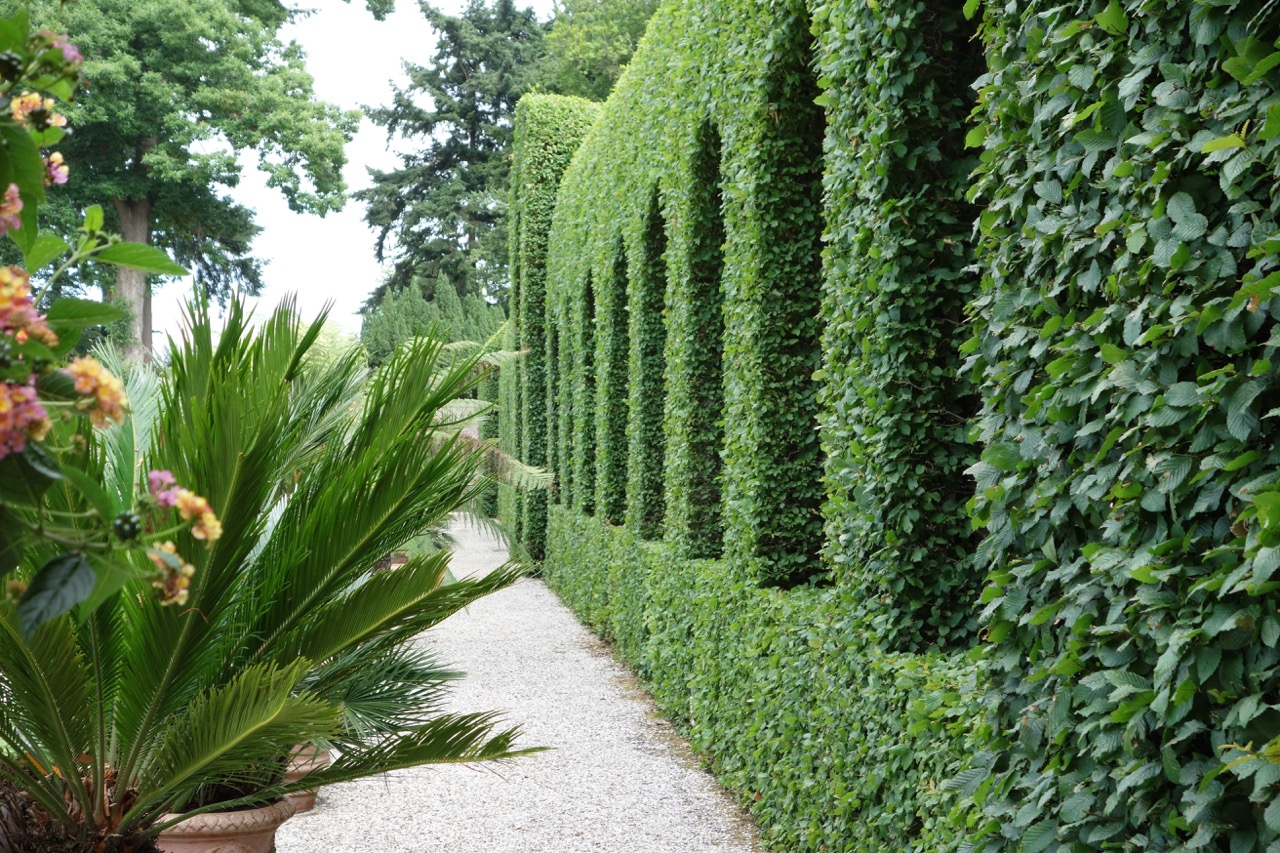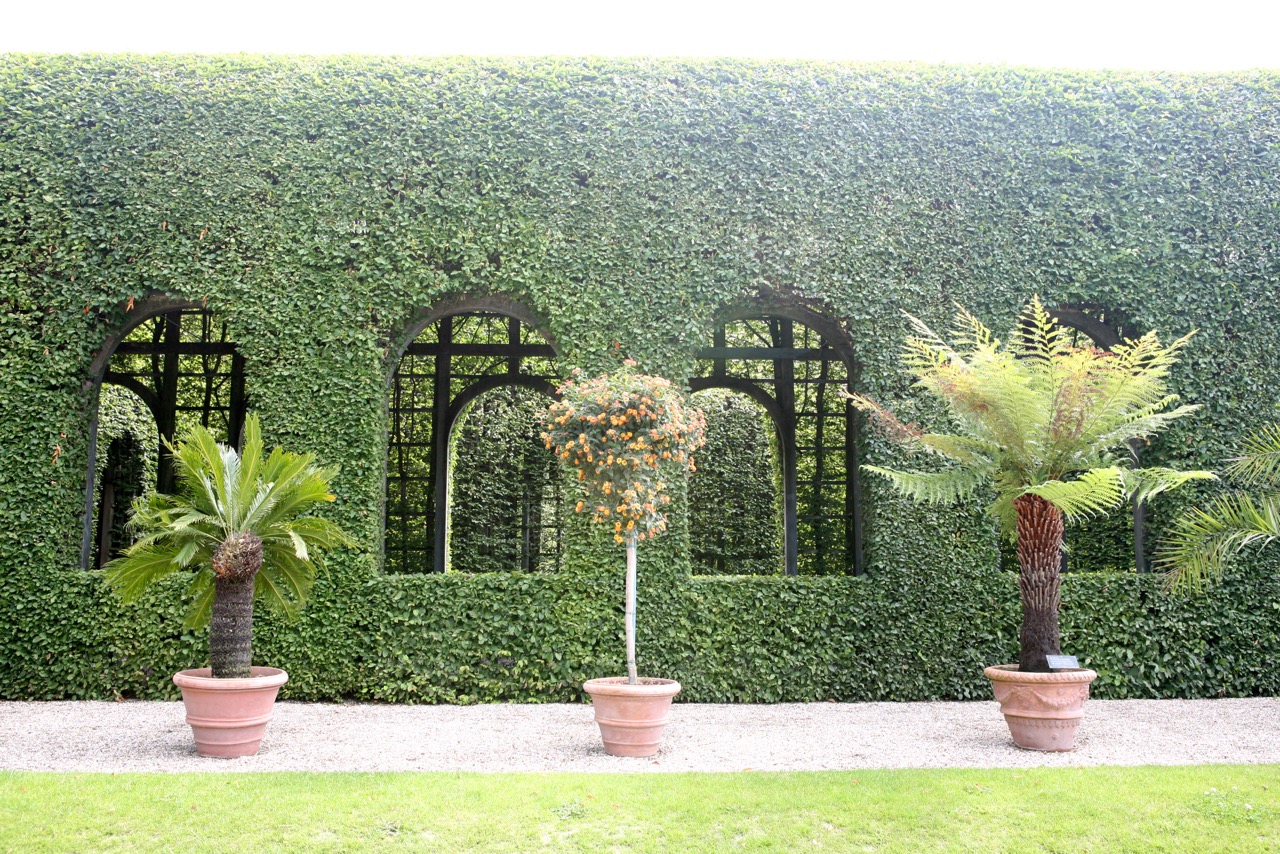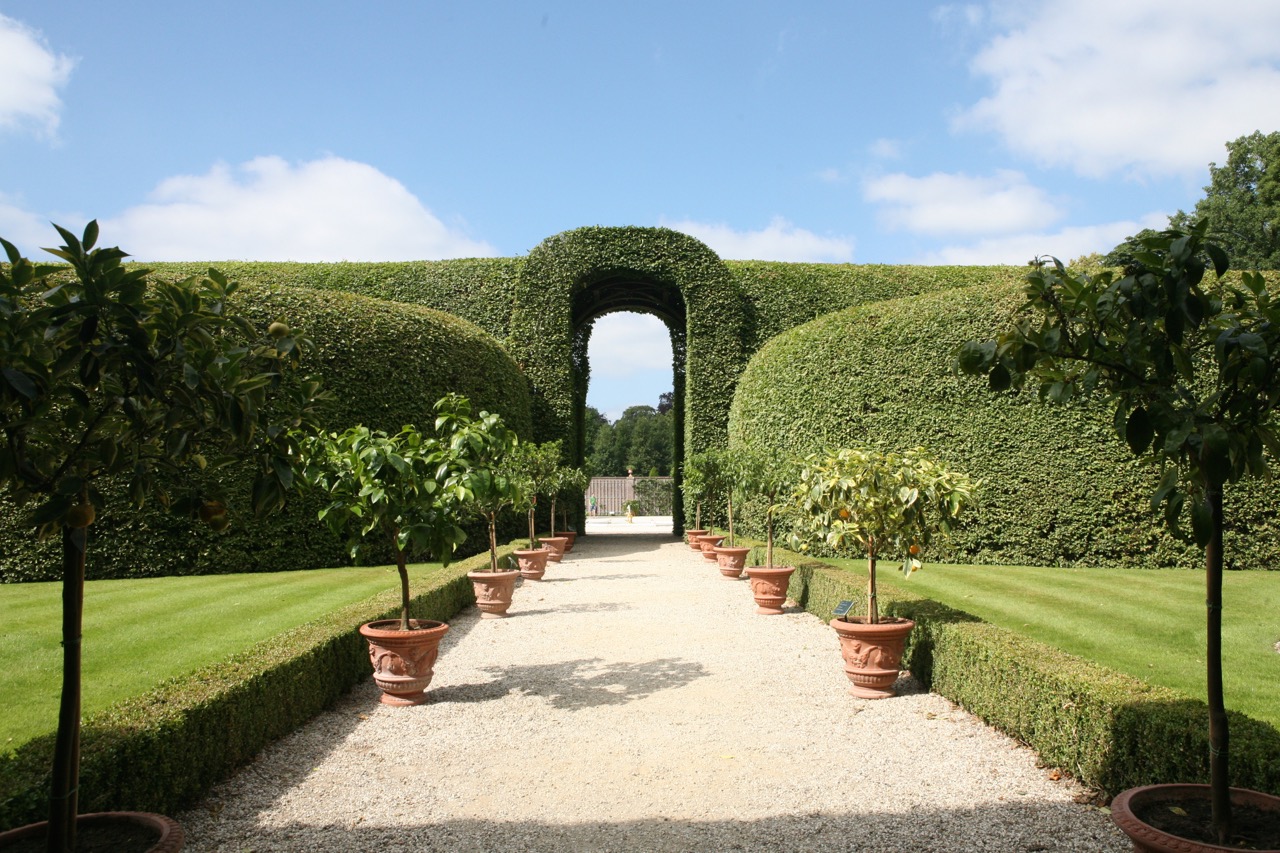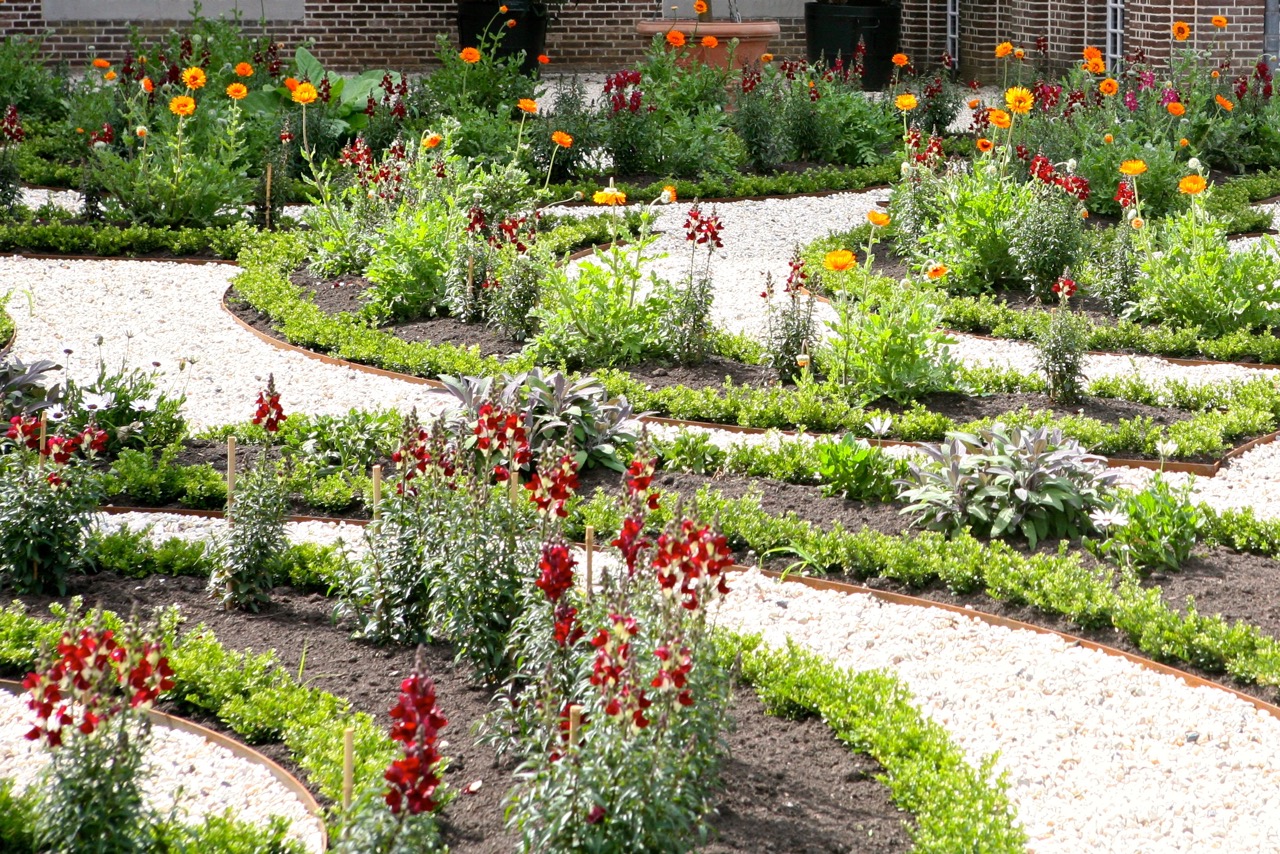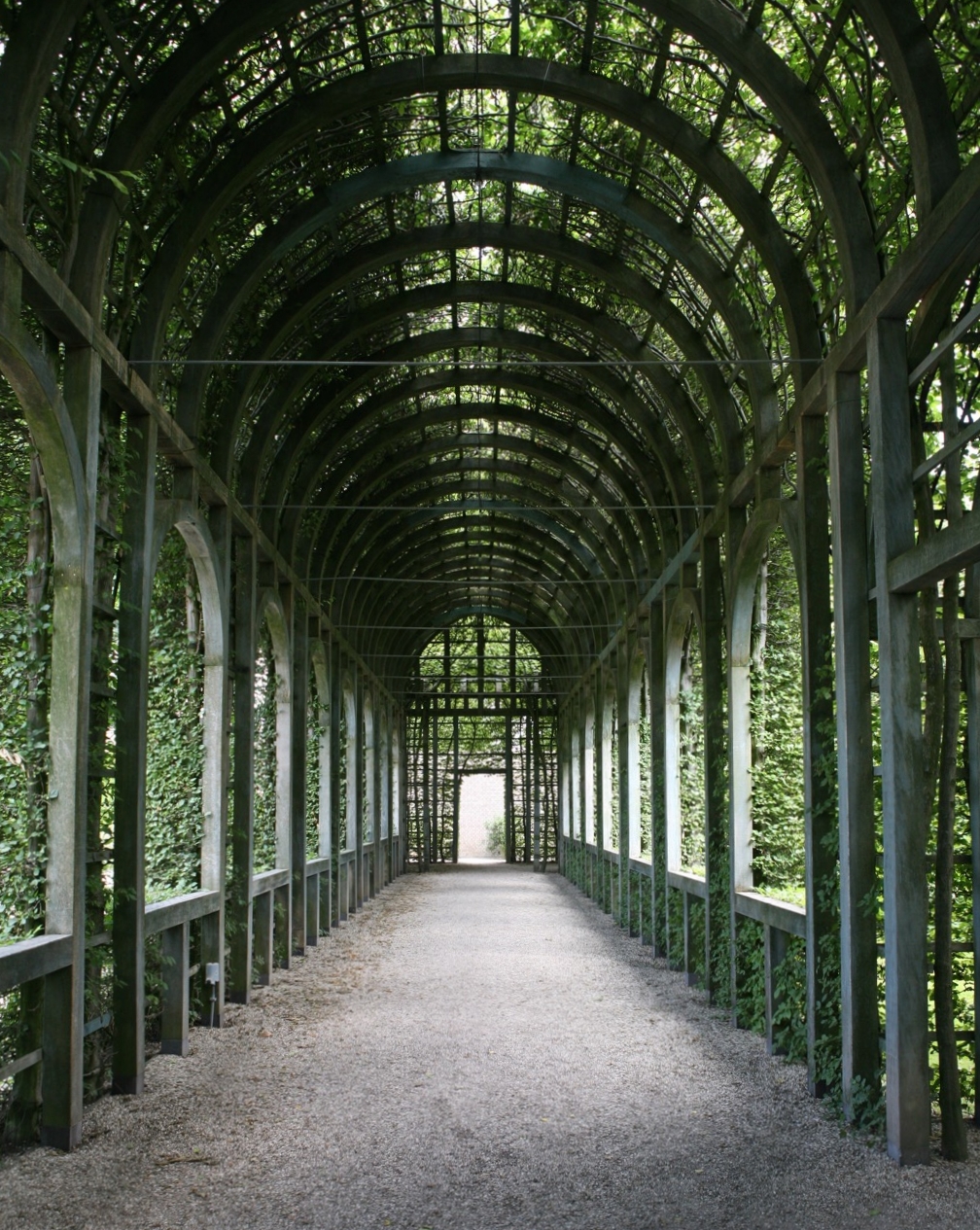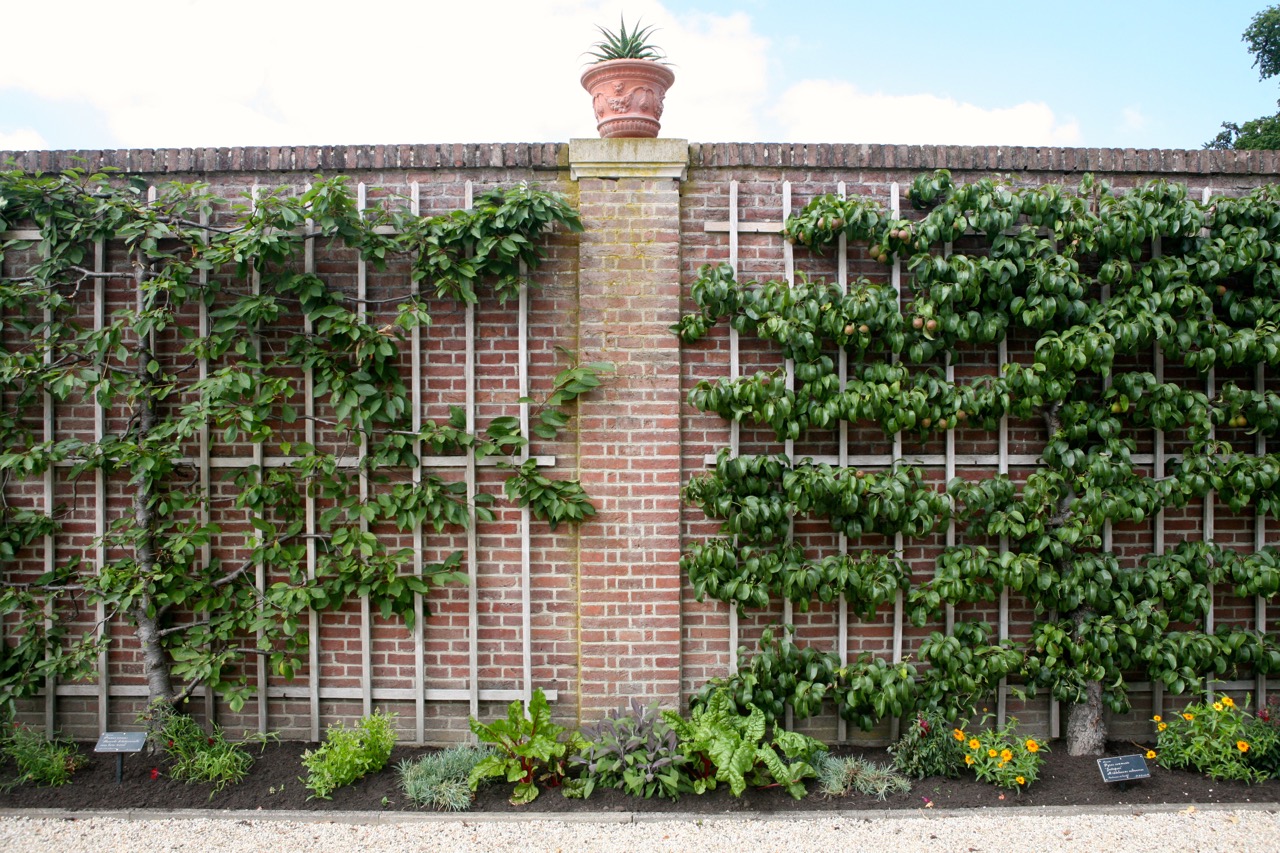Mary Stuart’s life story reminds us that royalty isn’t all 'happily ever after.' “A reluctant bride,” Mary (of England) married her cousin Willem III (of Holland) in 1677. She was 15, he was 27. The wedding was intended to repair relations between their two countries that had been at war since 1650 over trade.
Mary Stuart (aka Queen Mary II who became joint regent with WIlliam ). Portrait by Peter Lely, 1677
A few years later Willem III bought a medieval hunting lodge near Apeldoorn, the Netherlands to create a luxurious summer palace, Het Loo. The landscape was designed in the French formal style by mathematician Daniel Marot with parterres laid out by Christiaan Pieter van Staden. There is a central axis with radiating walks, several water features, and boxwood clipped into embroidery-like patterns.
Mary’s married life wasn’t easy. All three of her pregnancies ended in miscarriage and William carried on an affair with one of her personal assistants. As part of “The Glorious Revolution” they became King William III and Queen Mary II in exchange for agreeing to the Bill of Rights. This historic document limited the power of monarchs – they could no longer pass laws or levy taxes without parliamentary approval. Also under their reign, The Bank of England was founded to control government spending.
Lest we feel sorry for Mary, Het Loo contains a place just for her – the Queen’s Garden. It is set off to a quiet side of the house and is sunken one flight of steps below the main level. At the gardens entrance a pair of cherubs holding sea shells welcome visitors. There is a delicate parterre broderie of dwarf box and flowering annuals. A small central fountain is the perfect size for the space, adding just the right level of sound. Espaliered fruit trees and grape vines soften the brick walls.
Century old citrus trees line the walk. They symbolize William's House of Orange. The garden was designed to be seen from the above.
Century-old citrus trees line the borders - a symbol of the House of Orange (William’s royal family). The presence of the garden right next to the house reminds the visitor that they are under a watchful eye. Of course, this section is meant to be viewed from the house so that the design can be fully appreciated.
To provide Mary with some privacy and a shady retreat, hornbeam covers a massive trellis walk. This element appears as a large living structure. Behind it lie more formal gardens.
Williamsburg, Virginia and the College of William and Mary were named after the King and Queen in 1693. Mary died one year later of smallpox.
When you visit this garden, be sure to linger inside the trellis structure. It is a welcome break from the scale of the rest of the landscape.
Mary’s garden was recreated in 2011.
The Queen's Garden sits to the right of the house and provides private outdoor space.

